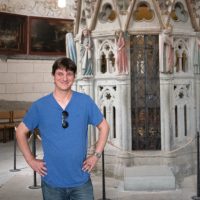CAA News Today
AC2024 Edwards Memorial Support Grant Recipients Announced
posted by CAA — January 12, 2024
The CAA Edwards Memorial Support Grants, in memory of Archibald Cason Edwards Sr. and Sarah Stanley Gordon Edwards and made possible by Mary D. Edwards, support women who are emerging scholars and have received their PhD within the past two years or who are nearing the end of a doctoral program. Congratulations to the Annual Conference 2024 recipients, Daniella Berman and Phillippa Pitts!

Daniella Berman, Independent Scholar
Presentation: Revolution as Natural Disaster: Re-Framing 1789
Session: Disaster! Trouble in Eighteenth-Century Art
Presentation Abstract:
In Auguste Desperret’s lithograph, a volcano erupts the word LIBERTÉ. Lava cascades down, threatening to encircle successive cityscapes (representing countries at risk, identified by their flags) and sending figures – many in military uniform – running in the midground. In the foreground, the ruins of a castle bear the date 1789, surrounded by stone fragments inscribed with abandoned values including diving rights and feudalism. The sky is peppered with boulders bearing the words julliet, in reference to the July 1830 revolution.
Produced in 1833 for the satirical publication La Caricature, Desperret’s print Troisième eruption du volcan de 1789, reframes the impacts of the French Revolution as a natural disaster. In so doing, it draws on tropes prevalent in eighteenth-century dialogues inspired by Voltaire among others, that positioned the Revolution as a rupture, oftentimes violent, akin to natural phenomena. However, Desperret’s print calls into question how these natural disaster metaphors for the French Revolution and the St. Dominque revolt were utilized and transformed as the event was repeatedly reframed in the years following 1789 and well into the nineteenth century. What was the function of such analogies, and how were they visualized? This paper will explore the manifestations of Revolution as natural disaster across the material culture of the long eighteenth century, tracing the shifting dialogues that positioned the Revolution as a rupture or cyclical, as progress or failure, as upheaval or disruption, while considering the legacies of this rhetoric in the historiography of the Revolution and related visual material.

Phillippa Pitts, Boston University
Presentation: Fever Trees & Pharmacopeic Dreams: The Medical Manifest Destiny within Frederic Edwin Church’s Heart of the Andes
Session: U.S. Imperialism, Extraction, and Ecocritical Art Histories
Presentation Abstract:
Although often overlooked, the pursuit of health was central to the nineteenth-century ideas of empire that shaped both U.S. Americans’ imagined sphere of influence and the period’s enthusiasm for grand landscape painting. As the source of lifesaving cinchona, quinine, and diverse Peruvian elixirs, the Andes loomed particularly large in the antebellum imagination. Plays, panoramas, popular scientific texts, and patent medicine ads all cultivated popular interest in this supposed Edenic garden of health and abundance under perpetual threat of spectacular destruction by earthquakes and volcanoes. Taking Frederic Edwin Church’s The Heart of the Andes as its central case study, this paper recreates the conditions of vision in the antebellum city to reveal the underexamined pharmacopeic narratives within the painting and its dramatic performance. In doing so, it highlights how such displays of biodiverse abundance concealed the actual violence of botanical extraction. Indigenous and African laborers were, as one period observer noted, “made human sacrifices to furnish health to the white foreigners,” dying of disease as they carried the lifesaving treatments that would safeguard European and U.S. American imperial forces across the Global South. Today’s scholarly emphasis on the genocidal colonial excavation of Andean gold and silver has similarly elided the cultural, ecological, and human cost of extracting vegetable resources. Pairing insights from ecocriticism and critical disability studies, this paper argues for the importance of recognizing this medical Manifest Destiny, as well as artists’ role in naturalizing such discourse.
AC2024 Annual Artist Interviews Announced: Dawoud Bey and Anne Wilson
posted by CAA — December 11, 2023
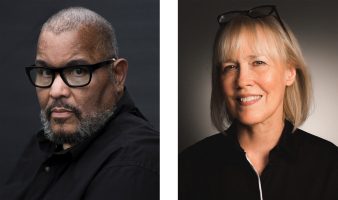
Dawoud Bey (photograph by Frank Ishman) and Anne Wilson (photograph by Joe Mazza)
CAA is thrilled to announce that Chicago-based artists Dawoud Bey and Anne Wilson will be the featured guests of the CAA 112th Annual Conference Annual Artist Interviews. Established in 1997, the Annual Artist Interviews, sponsored by the CAA Services to Artists Committee (SAC), remains the most highly anticipated event at the conference. This year, Bey will be interviewed by Elisabeth Sherman, Senior Curator and Director of Exhibitions and Collections, International Center of Photography, and Wilson will be interviewed by Elissa Auther, Deputy Director of Curatorial Affairs and the William and Mildred Lasdon Chief Curator, Museum of Arts and Design.
Dawoud Bey
Groundbreaking American artist and MacArthur Fellow, Dawoud Bey, is known for his evocative photographs and film works about communities that are often marginalized and for visualizing the oft disappeared histories of the Black presence in America. He began his career as a photographer in 1975 with a series of photographs, Harlem, USA, that was exhibited to critical acclaim in his first one-person exhibition at the Studio Museum in Harlem in 1979. His work has since been the subject of numerous exhibitions and retrospectives, including recently, Dawoud Bey: An American Project and Dawoud Bey and Carrie Mae Weems: In Dialogue, at museums and galleries worldwide, including the Art Institute of Chicago, the High Museum of Art, the National Gallery of Art, San Francisco Museum of Modern Art, the Getty Center, the Seattle Art Museum, the Museum of Fine Arts, Houston, the Walker Art Center, and the Whitney Museum of American Art.
His work has also been the subject of several monographs, including a forty-year retrospective monograph Seeing Deeply (University of Texas Press, 2017) and the recent Street Portraits (MACK Books, 2021). His critical writings on contemporary art and photography have appeared in a range of publications. Most recently, Elegy (Aperture, 2023) accompanies an exhibition at the Virginia Museum of Fine Arts and brings together the history projects and landscape-based work Bey has made since 2012.
Dawoud Bey received his MFA from Yale University School of Art and is currently Professor of Photography and a former Distinguished College Artist at Columbia College Chicago, where he has taught since 1998. He is represented by Sean Kelly Gallery, Stephen Daiter Gallery, and Rena Bransten Gallery.
Anne Wilson
Anne Wilson is a Chicago-based visual artist who creates sculpture, material drawings, and performances that explore themes of time, loss, and private and social rituals. Wilson’s artwork resides in permanent collections around the world, including the Metropolitan Museum of Art, Art Institute of Chicago, Museum of Contemporary Art, Chicago, Des Moines Art Center, Detroit Institute of Arts, Victoria & Albert Museum, London, Foundation Toms Pauli, Lausanne, Switzerland, and the 21st Century Museum of Contemporary Art, Kanazawa, Japan. Wilson was named a 2015 United States Artists Distinguished Fellow and is the recipient of awards from the Renwick Alliance, Textile Society of America, the Driehaus Foundation, Artadia, the Louis Comfort Tiffany Foundation, National Association of Schools of Art and Design, Cranbrook Academy of Art, the National Endowment for the Arts, and the Illinois Arts Council. She is represented by the Rhona Hoffman Gallery and Paul Kotula Projects. Wilson is a Professor Emeritus in the Department of Fiber and Material Studies at the School of the Art Institute of Chicago where she advises graduate students. Her upcoming project opens at the Museum of Arts and Design, NYC in 2024.
The AC2024 Annual Artist Interviews will be held on Friday, February 16, 4:30–7:00 p.m. CT at the Hilton Chicago. This event will also be livestreamed on YouTube.
Register now for the CAA 112th Annual Conference, February 14–17, 2024 in Chicago!
Notice of CAA 112th Annual Business Meeting
posted by CAA — December 11, 2023
CAA Annual Business Meeting
Friday, February 16, 2024
1 p.m. CT
The 112th Annual Business Meeting of the members of the College Art Association will be called to order at 1 p.m. CT on Friday, February 16, 2024, at the Hilton Chicago. Access to this meeting is included in paid registration and no-cost registration. CAA President, Jennifer Rissler, will preside.
Agenda
- Welcome + Call to Order – Jennifer Rissler, CAA President
- Executive Director Report – Meme Omogbai, CAA Executive Director + CEO
- Approval of 111th Annual Business Meeting Minutes [ACTION ITEM]
- Financial Report
- Old/New Business
- Board Member Election Results – Jennifer Rissler, CAA President
- Adjourn
Board Voting
along with an online voting form. Please submit your voting form for the 2024 election no later than 5 p.m. CT on Thursday, February 15th, 2024.
Next Meeting – 2025
The 113th Annual Business Meeting of the College Art Association will be held in February 2025, precise date and location to be announced.
S. Hollis Clayson Named AC2024 Distinguished Scholar
posted by CAA — November 29, 2023
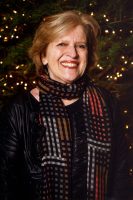
The Distinguished Scholar session at the 112th CAA Annual Conference will honor the acclaimed career of S. Hollis Clayson. Clayson has been at the forefront of art history scholarship as part of the first generation of feminist academics whose work centers on representations of the female body, the role of art in social and political conflict, and the intersection of art and technology.
Hollis Clayson is Professor Emerita of Art History and Bergen Evans Professor Emerita in the Humanities at Northwestern University where she taught for thirty-five years, advising twenty-seven doctoral dissertations. A specialist in nineteenth-century European art, she has published widely on art practice in Paris as well as transatlantic cultural exchanges, especially those between France and the United States. Her books include Painted Love: Prostitution in French Art of the Impressionist Era (Yale University Press, 1991), Paris in Despair: Art and Everyday Life Under Siege (1870–71) (University of Chicago Press, 2002), Is Paris Still the Capital of the Nineteenth Century? Essays on Art and Modernity, 1850–1900, co-edited with André Dombrowski (Routledge, 2016), and Illuminated Paris: Essays on Art and Lighting in the Belle Époque (University of Chicago Press, 2019). Her book in progress is entitled The Dark Side of the Eiffel Tower.
Clayson’s research has been supported by the American Council of Learned Societies (ACLS), the Getty Research Institute, the Clark Art Institute, Institut national d’histoire de l’art (INHA), the Huntington Library, Columbia University’s Reid Hall in Paris, and the Center for the Advanced Study of the Visual Arts (CASVA) at the National Gallery of Art. In early 2014, she was named a Chevalier in the Ordre des Palmes Académiques by the French Ministry of Culture.
From 2006–13 she served as the founding Director of the Alice Kaplan Institute for the Humanities at Northwestern. She was Sterling Clark Professor in Art History, Williams College in fall 2005; the Samuel H. Kress Professor at CASVA (2013–14; and in fall 2015, she was Kirk Varnedoe Visiting Professor at the Institute of Fine Arts, New York University. Most recently, she was the 2022–23 R. Stanton Avery Distinguished Fellow at the Huntington Library.
Dr. Clayson’s career and her impact on the field will be celebrated with presentations and a dialogue with scholars and colleagues:
Session Chairs:
Anne Helmreich, Smithsonian Archives of American Art
Hector Reyes, University of Southern California
Session Panelists:
Thomas Crow, New York University
André Dombrowski, University of Pennsylvania
Marc Gotlieb, Williams College
Martha Ward, University of Chicago
The AC2024 Distinguished Scholar Session will be held on Thursday, February 15, 4:30–6:30 p.m. CT at the Hilton Chicago. This event will also be livestreamed on YouTube.
Register now for the CAA 112th Annual Conference, February 14–17, 2024 in Chicago!
Meet the 2024 CAA Annual Conference Kress Travel Grant Recipients
posted by CAA — November 28, 2023
Recognizing the value of the exchange of ideas and experience among art historians, the Kress Foundation is offering support for scholars participating as speakers at the 2024 CAA Annual Conference. The scholarly focus of the papers must be European art before 1830.
Samuel H. Kress Foundation CAA Annual Conference Travel Fellows 2024

Michela Degortes, Researcher, University of Lisbon
“Approaching the Portrait Gallery of the Academy of Sciences of Lisbon”
Art Collections of Academies of Sciences
Chair: Viktor Oliver Lorincz
The Academy of Sciences of Lisbon was founded in 1779 under the patronage of Maria I of Braganza, thanks to the effort of enlightened figures of the Portuguese aristocracy, clergy, and scientific elite. A print published the same year in the Jornal Enciclopedico to celebrate the event represents the queen surrounded by a circle of learned courtesans while holding hands with a figure symbolizing Knowledge. A portrait of Maria I located in one of the main rooms of the Academy celebrates her role as a patron.
Painted by the Irish artist Thomas Hickey in 1783, it is part of the gallery of paintings held by the Academy of Sciences of Lisbon, which brings together the portraits of remarkable figures of the eighteenth- and nineteenth-century Portuguese cultural milieu. It includes portraits of other members of the royal family as well as of important members of the institute, such as José Francisco Correia da Serra, Manuel de Cenaculo, and Joseph Mayne, whose cabinet of curiosities constitutes the museum of the Academy. Despite the remarkable quality of many of these artworks and their influence on the Portuguese artistic context, the collection still lacks a deep investigation. This paper focuses on the sitters, the artists involved, and the donations that formed the collection, and gives rise to interesting comparisons to similar art collections held by other academies of science.
Charline Fournier-Petit, PhD candidate, University of Maryland and Lecturer, École du Louvre
“Elisa Bonaparte Baciocchi and Diplomacy: A Gift of Fourteen Portraits,”
Women and Diplomatic Art
Chair: Silvia Tita
Tense, if ever conflicting, were the relationships between Elisa Bonaparte Baciocchi, Grand Duchess of Tuscany, and her brother, the emperor Napoleon I. A clever ruler, she rapidly exploited the marble quarries of Carrara for diplomatic purposes, producing abundant portraits of the great sovereigns of her time. Sculpture also served her as a surrogate for diplomatic dialogue with the emperor to affirm her legitimacy as the sovereign of Tuscany and her daughter’s dynastic succession. In 1809, Elisa Bonaparte Baciocchi gifted a series of fourteen marble portraits depicting members of the Bonaparte family to Napoleon I, including her own bust and that of her daughter, Napoléone-Elisa. Extracted from her own quarries and intended for the busy Galerie de Diane at the Palais des Tuileries, this series in marble was both a political message sent not only to the childless emperor, but also to their siblings and to the court. With this gift, Elisa Bonaparte Baciocchi demonstrated her capability to impose her authority over a conquered province and restore the prestige of Carrara. And, by gathering quickly such a large number of sculptures, she was also displaying the production capacity of her marble quarries. The gift also epitomized her diplomatic strategy and dynastic aspiration, thorugh which Elisa Bonaparte Baciocchi turned her motherhood into a powerful argument supporting her political ambitions.

Gohar Grigoryan, , University of Fribourg, Switzerland
“An Illustrated Armenian Law Book and the Ceremonial Mise-en-scène of the King’s Body”
Medieval Ritual Representations: Model of or Model for?
Chairs: Alice Isabella Sullivan and Robert Nelson
A miniature created in 1331 in the Cilician Armenian capital of Sis depicts the young king Lewon IV (r. 1321–1341) at the tense moment of executing—according to the nearby inscription— “just judgment.” The full-page image serves as frontispiece to the oldest extant copy of the Assizes of Antioch—a now-lost Frankish legal code. An important monument of secular law, the Assizes of Antioch was influential beyond the Principality of Antioch and the crusader states, reaching the Armenian Kingdom of Cilicia (1198–1375). Its main purpose was the regulation of the relationship between the suzerain and his vassal lords, and it is exactly these relationships that are represented in the miniature in question, with the king seated on an elevated throne and executing justice over his lords. Initiated by the king himself, the juridical image of Lewon IV was heavily charged with realistic codes, idealizing symbols, and eschatological messages, the intended meanings of which will be tackled in my paper. I will first focus on how the king’s painter, Sargis Pitsak, visualized the ceremonial mise-en-scène around the sovereign’s imposing body and how the latter’s political agenda is reflected in this and other portrayals of him. The discussion continues with questions of visibility and the particular occasions at which the target audience could possibly see an emblematized image like this.

Laura Hutchingame, PhD candidate, University of California Los Angeles
“Red Larch at San Fermo: Ligneous Knowledge in the Upper Adriatic”
Wood: Medium Specificity in the Global Early Modern Period
Chair: Tatiana String
In the late medieval Adriatic, wood was a crucial natural resource and building material that required highly specialized knowledge. From felling alpine trees, preparing logs into rafts, floating rafts downriver, to storing and seasoning timbers, the preparation of lumber involved labor-intensive processes. The “ship-hull ceiling,” in the form of an inverted ship, was an important artifact that proliferated throughout the region from ca. 1300–1450 and was fostered by the collaboration between different wood-based artisans. The ceiling at the church of San Fermo in Verona, executed from ca. 1300–50, offers an exceptional case study. In addition to its innovative design, recent conservation work has uncovered material evidence of how artisans sourced appropriate lumber, prepared timbers, and crafted the ceiling from local red larch. I highlight the specialized ligneous knowledge of artisans who contributed to the production of the ceiling. I show how the ceiling (and wood itself) is a source of interconnections between patrons, artisans, political regimes, and religious orders of this time. At San Fermo, the material and physical qualities of wood are neither representational nor represented but are made visible through crafting.


Cynthia Kok, PhD candidate, Yale University, and Stephanie Archangel, Curator, Rijkmuseum
“Edvardt Abraham Akaboa de Moor, a Master Silversmith from Angola”
Center and Periphery?: Mapping a Future for Research in Netherlandish Art
Historians of Netherlandish Art
Chair: Stephanie Dickey
With origins as a “prestige project,” the Rijksmuseum grapples with the legacy of prioritizing upper-class artworks and narratives, leading to criticisms that the institution is a place of and for elites. Decorative arts within the collection, however, were rarely made by the upper classes. We turn to objects and archives to consider these marginalized makers more closely. We take as a case study a gun by Edvardt Abraham Akaboa de Moor. From archival research, we learn that de Moor was a Black man from Angola who likely found his way to the Netherlands via modern-day Ghana. By 1665, however, de Moor worked as a skilled weapons engraver as a member of the silversmith’s guild and lived with his Dutch wife and children in Utrecht. The Rijksmuseum’s flintlock hunting gun is signed “Edvardt Abraham de Moor” and “tot Utrecht,” claiming ownership of the lock, the most technically difficult part of the gun. As with other marginalized figures, little information remains of de Moor—certainly no portraits nor personal archives—yet traces of him and his descendants remain in the state archives and in museums. We ask, How do we recover the identity of individuals who operated and worked in craft workshops? Can a shift in focus to makers and archives allow museums to interrogate the narratives of marginalized peoples? And how can museums conscientiously address the question, to whom does the agency of craftsmanship belong?
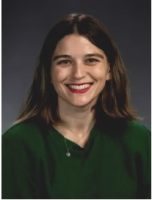 Caroline Delia Koncz, Assistant Professor, Angelo State University
Caroline Delia Koncz, Assistant Professor, Angelo State University
“Lavinia Fontana’s Minerva Unarmed: The Female Nude, as Seen and Painted by Woman”
What Did Women See? Gender and Viewing Experience in Early Modern Italy
Chair: Sabrina De Turk
Created shortly before the artist’s death in 1614, Lavinia Fontana painted a rather curious rendering of the virginal goddess of wisdom for Cardinal Scipione Borghese. Standing in profile, her head tilted speculatively towards the viewer, Minerva holds in her arms a sumptuous dress of luxurious fabrics and gold trim, which she is presumably about to don. Beside her in the room, one can find the deity’s pet owl alongside her previously adorned armor, helmet, and shield, all of which serve to identify the goddess. Such objects were likely necessary to include, since, beyond the subject of the Judgment of Paris, remarkably few Italian artists in the early modern period depicted Minerva unrobed, and even fewer were women. I consider the unique iconography of Fontana’s painting as well as the intended message this work held for its viewers in seventeenth-century Italy. In addition to considering the male owner’s reception of the piece, this talk will more closely study how female beholders of the period might have analyzed the nude Minerva, when fashioned by the hand of a woman painter.
Matthew Sova, PhD candidate, Johns Hopkins University
“Representations of Performance in the Konstanz Holy Sepulcher”
Medieval Ritual Representations: Model of or Model for?
Chairs: Alice Isabella Sullivan and Robert Nelson
Located in Konstanz Cathedral, a thirteenth-century holy sepulcher stands as significant material evidence for widespread medieval practices of architectural copying. Understood as a reconstruction of the Tomb of Christ aedicule in the Church of the Holy Sepulcher in Jerusalem, scholars emphasize the Konstanz holy sepulcher’s reliance on the plans, dimensions, spaces, and structures of its illustrious model. These interpretations often downplay variations in appearance and function between the two microarchitectural objects, as well as regional contexts for these deviations in the Konstanz copy. Specifically, the Konstanz holy sepulcher features an extensive sculptural program of figures from Christmas, Easter, and the early church, which has no precedent in the Jerusalem aedicule. My paper investigates these sculptures, linking them to a local tradition of religious performances undertaken in and around the Konstanz holy sepulcher. Numerous medieval texts from Konstanz describe ritualized Holy Week reenactments in the city’s cathedral, performed by the clergy outside of the Mass. These paraliturgical events emphasized the roles of the three Marys, apostles, and angels, central figures in the Konstanz object’s artistic program. I show that these sculptures not only visualized the scriptural events of Easter, but served as permanent, idealized representations of Holy Week performances. Consequently, I argue that the Konstanz holy sepulcher’s sculptural program both enhanced the function of the copy as a stage for paraliturgical drama, and perpetually reinscribed historical and spiritual connections between its associated medieval community and the site of Christ’s death and resurrection in Jerusalem.
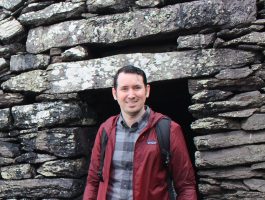 Mark H. Summers, Lecturer, University of Arkansas, Fayetteville
Mark H. Summers, Lecturer, University of Arkansas, Fayetteville
“Ritual Practice as Community Building in the Birds Head Haggadah”
Medieval Ritual Representations: Model of or Model for?
Chairs: Alice Isabella Sullivan and Robert Nelson
The Birds Head Haggadah, dated to around 1300 and produced in the Upper Rhine region of Southern Germany, is one of the earliest extant illuminated Ashkenazic haggadot, or manuscripts, that contain the ritualistic text recited at the Passover Seder. The book is well-known for its unusual approach toward figuration, styling Jewish people as hybrids with human bodies and heads of griffins, featuring the curving beaks of eagles and the pointed ears of lions. Throughout the manuscript, figurative illuminations in this style occupy the margins, enacting the historical events remembered at Passover and performing ritualistic activities associated with celebration of the feast. A pair of openings from the manuscript exemplifies this twofold approach. On folios 24v-25r, a scene from the Exodus unfolds across the lower margins. Though the story here refers to historical events of persecution, the figures that receive loaves of unrisen bread and turn to follow Moses appear in medieval styles of dress. While the story relates the flight from Egypt and pursuit by Egyptian soldiers, here the aggressors are likewise rendered as contemporary figures. As non-Jews, Pharoah and his soldiers appear as fully human figures with blank faces and are outfitted as German knights bearing the black eagle flag of the Holy Roman Empire. On the next opening spanning folios 25v-26r, the marginal program presents a scene of the ritualistic practice of making unleavened matzo, an act of abstinence that makes the historical suffering of the Jewish people tangible for the duration of Passover. The figures animating this scene, which is presented as a contemporary activity rather than a historical narrative, appear visually indistinct from the actors rendered in the previous opening. Here, the Jewish men and women working together to prepare dough, divide portions, and bake bread are all dressed in the same kinds of clothing as the followers of Moses, complete with modest hair coverings for women and the pointed hats worn by adult men that were at times compulsory accessories for men in northern medieval Europe. The approach in the visual program outlined in these openings creates a temporal elision connecting historical events with contemporary ritualistic practices. The result establishes the Passover Seder as what Marc Epstein calls a “metahistorical topos,” or a kind of temporal interconnectivity that links past, present, and future events and practices for the book’s users/viewers. I consider how the representation of ritual in the Birds Head Haggadah engages with metahistorical narratives to build community and identity for its medieval users.
 Joyce Zhou, PhD candidate and Teaching Fellow, Yale University
Joyce Zhou, PhD candidate and Teaching Fellow, Yale University
“Playing with Porcelain: Reimagining the Self with the Early Modern Dutch Dollhouse”
Miniature Designs and Worldly Simulations: Questions of Scale in Early Modern Arts
Chair: Wenjie Su
Sometime between 1743 and 1751, a Dutch woman named Sara Rothé assembled two elaborate dollhouses. Rothé describes a porcelain display room in one of her dollhouses, which survives today in the Kunstmuseum in The Hague. The room contains a variety of miniature arts, including miniature porcelain imported by the Dutch East India Company from China and Japan, as well as domestic imitations in ivory and glass. Pioneered by Amalia van Solms, Princess of Orange (1602–1675), this practice of dedicating entire rooms to the collection and display of East Asian porcelain was associated exclusively with female members of the House of Orange. While Rothé did not have the status nor financial means to recreate van Solms’ porcelain display in full-scale, she was able to successfully do so in the intimate realm of her dollhouse.
I explore the intersection of two early modern Dutch female collecting practices: the curation of dollhouses by wealthy Dutch women, and the formation of dedicated porcelain display chambers in Dutch royal circles. Building on the work of Hanneke Grootenboer and Susan Stewart, I argue that early modern Dutch dollhouses facilitated aspirational and imaginative thinking. Rothé’s porcelain room, which encapsulates Dutch royal porcelain chambers on a reduced scale, was a controlled and manipulable space in which Rothé adopted an alternate subjectivity and engaged in imaginative play. Here, Rothé could take on the persona of a Dutch royal, handling the various fruits of global commercial exchange as she engaged in immersive self-fashioning.
Finalists for the 2024 Morey and Barr Awards
posted by CAA — November 16, 2023
CAA is pleased to announce the 2024 finalists for the Charles Rufus Morey Book Award and the two Alfred H. Barr Jr. Awards. The winners of the three prizes, along with the recipients of other Awards for Distinction, will be announced in January 2024 and presented during Convocation in conjunction with CAA’s 112th Annual Conference, February 14–17, 2024.
CHARLES RUFUS MOREY BOOK AWARD SHORTLIST, 2024
Delia Cosentino and Adriana Zavala, Resurrecting Tenochtitlan: Imagining the Aztec Capital in Modern Mexico City, University of Texas Press
Matthew Francis Rarey, Insignificant Things: Amulets and the Art of Survival in the Early Black Atlantic, Duke University Press
Tatiana Reinoza, Reclaiming the Americas: Latinx Art and the Politics of Territory, University of Texas Press
Andrew M. Shanken, The Everyday Life of Memorials, Zone Books
Jennifer Van Horn, Portraits of Resistance: Activating Art during Slavery, Yale University Press
ALFRED H. BARR JR. AWARD SHORTLIST, 2024
Emily Braun and Elizabeth Cowling, eds., Cubism and the Trompe l’Oeil Tradition, The Metropolitan Museum of Art
James A. Doyle, Oswaldo Chinchilla Mazariegos, and Joanne Pillsbury, eds., Lives of the Gods: Divinity in Maya Art, The Metropolitan Museum of Art
Diana Seave Greenwald, ed., Betye Saar: Heart of a Wanderer, Princeton University Press and the Isabella Stewart Gardner Museum
Leo G. Mazow, Storied Strings: The Guitar in American Art, Virginia Museum of Fine Arts
David Pullins, and Vanessa K. Valdés, eds., Juan de Pareja: Afro-Hispanic Painter in the Age of Velázquez, The Metropolitan Museum of Art
ALFRED H. BARR JR. AWARD FOR SMALLER MUSEUMS, LIBRARIES, COLLECTIONS, AND EXHIBITIONS SHORTLIST, 2024
Christophe Cherix, Courtney J. Martin, Akili Tommasino, and Stephanie Weissberg, Barbara Chase-Riboud Monumentale: The Bronzes, Princeton University Press, Princeton, and the Pulitzer Arts Foundation
Elliot Bostwick Davis, Edward Hopper & Cape Ann: Illuminating an American Landscape, Rizzoli Electa, New York, and The Cape Ann Museum, Boston
Apsara DiQuinzio, Jeff Gunderson, Alexander Nemerov, and Elaine Y. Yau, Adaline Kent: The Click of Authenticity, Rizzoli Electa New York and the Nevada Museum of Art, Reno
Perrin Lathrop, ed., African Modernism in America, Yale University Press, New Haven, and the American Federation of Arts
Shelly C. Lowe, Chair of the National Endowment for the Humanities, to give CAA AC2024 Convocation Keynote Address
posted by CAA — November 07, 2023
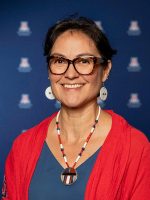
CAA is delighted to announce Shelly C. Lowe, Chair of the National Endowment for the Humanities, as the 2024 Convocation keynote speaker during the organization’s 112th Annual Conference in Chicago.
Chair Lowe is a citizen of the Navajo Nation and grew up on the Navajo Reservation in Ganado, Arizona. From 2015 to 2022 she served as a member of the National Council on the Humanities, the twenty-six-member advisory body to NEH, an appointment she received from President Obama. Lowe’s career in higher education has included roles as Executive Director of the Harvard University Native American Program, Assistant Dean in the Yale College Dean’s Office, and Director of the Native American Cultural Center at Yale University. Prior to these positions, she spent six years as the Graduate Education Program Facilitator for the American Indian Studies Programs at the University of Arizona.
Lowe has served in a variety of leadership roles nationally, most recently as a member of the University of Arizona Alumni Association Governing Board and of the Challenge Leadership Group for the MIT Solve Indigenous Communities Fellowship. She has served on the board of the National Indian Education Association and as a trustee on the board for the National Museum of the American Indian.
Lowe holds a Bachelor of Arts in Sociology, a Master of Arts in American Indian Studies, and has completed doctoral coursework in Higher Education from the University of Arizona.
AC2024 Convocation will be held on Wednesday, February 14, 6:30–8 p.m. CT at the Hilton Chicago. This event will also be livestreamed on YouTube.
Register now for the CAA 112th Annual Conference, February 14–17, 2024 in Chicago!
Meet the 2022 Professional Development Fellows
posted by CAA — February 07, 2023
CAA is pleased to announce the recipient of the 2022 Professional Development Fellowships. The recipient of the $10,000 fellowship in art history is Mechella Yezernitskaya, Bryn Mawr College, and the recipient of the $10,000 fellowship in visual art is Boone Nguyen, California State University, Los Angeles.
The honorable mentions in art history were awarded to Jack Crawford, City University of New York, and Astrid Tvetenstrand, Boston University. The honorable mentions in visual art are awarded to Jenna Carlie, California Institute of the Arts, and Alberto Lozano Ruvalcaba, Mendocino College.
2022 PROFESSIONAL DEVELOPMENT FELLOWSHIP IN ART HISTORY
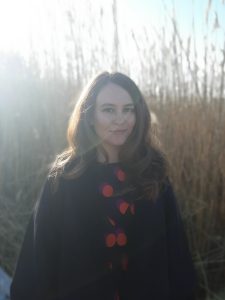
Mechella Yezernitskaya, Bryn Mawr College
Mechella Yezernitskaya is a Ukrainian American art historian, writer, and curator. She is a doctoral candidate in the Department of History of Art at Bryn Mawr College where she specializes in modern and contemporary art. Mechella received her M.A. from Bryn Mawr College and B.A. with honors in Art History from Fordham University. Her dissertation examines representations of temporal rupturing in the wartime visual, literary, and film culture of the avant-gardes of the late Russian Empire and the early Soviet Union. She examines war-related imagery in the work of artists of Belarusian, Russian, and Ukrainian origin across media including illustrated books, poetry, collage painting, performance, and film. By drawing upon theories from trauma and disability studies, Mechella explores the roles of the civilian and combatant, the temporal boundaries of wartime and peacetime, the consequences of imperialism, the rise of nationalism, and the affective experiences of war.
Her work has been supported by grants and fellowships from the American Association of University Women, the Association of Slavic, East European, and Eurasian Studies (ASEEES), the Pittsburgh Foundation, the Malevich Society, the New York Public Library, and the Graduate School of Arts and Sciences of Bryn Mawr College. She has published in ARTMargins Online, Baltic Worlds, post: notes on art in a global context, Slavic & East European Information Resources, and in the edited volume Artistic Expressions and the Great War, A Hundred Years On (Peter Lang Publishing, 2020). She has presented her research at Södertörn University, Stockholm; Karazin University, Kharkiv; Hofstra University, New York; Temple University, Philadelphia; The Museum of Russian Art, Minneapolis; and ASEEES. She has also held guest curatorial positions and fellowships at The Museum of Modern Art, the Philadelphia Museum of Art, the Pennsylvania Academy of the Fine Arts, and the Brooklyn Museum.
HONORABLE MENTIONS IN ART HISTORY
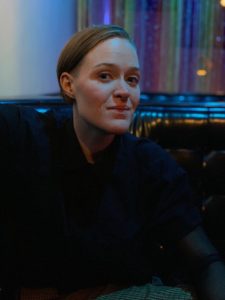
Jack Crawford, City University of New York
Jack Crawford is a teaching artist and art historian. She is currently a Lecturer at Vanderbilt University and University of Tennessee, Knoxville and has previously taught at the New York City College of Technology. She holds a BA from Barnard College and is currently completing her PhD in Art History at the CUNY Graduate Center. Her research, for which she received a 2021–2022 ACLS/Luce Dissertation Fellowship in American Art and a dissertation award from the CUNY Committee on Globalization and Social Change, focuses on appropriation and aesthetics of abundance in queer performance in the postwar period.
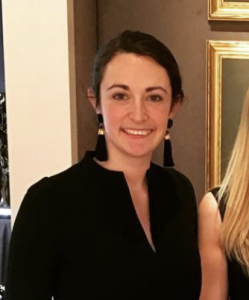
Astrid Tvetenstrand, Boston University
Astrid studies the history of American painting, decorative arts, and architecture. She explores these fields through practices of collection, economic development, and the consumption of American property. Her dissertation traces the connections between American art patronage, second homeownership, and landscape painting at the end of the nineteenth century. She argues that the process of collecting art and land was an effort made by affluent Americans to “buy a view.” By recognizing landscape paintings as investments and monetary goods, Astrid sheds new light on Gilded Age consumerism, aesthetics, and taste. She also localizes art market exchanges within a larger conversation about the privatization of public space.
Astrid’s work is encouraged by positions and fellowships held at the New York Public Library, Museum of Fine Arts, Boston, Massachusetts Historical Society, Nichols House Museum, Bundy Museum of History and Art, Peabody Essex Museum, deCordova Sculpture Park and Museum, Decorative Arts Trust, and Winter Antiques Show.
2022 PROFESSIONAL DEVELOPMENT FELLOWSHIP IN VISUAL ARTS
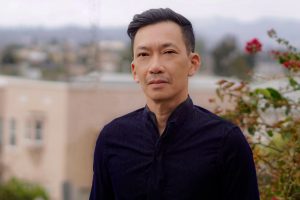
Boone Nguyen, California State University, Los Angeles
Boone Nguyen is an artist of the Southeast Asian diaspora. When he was a child, his family left Saigon and resettled as refugees in South Philadelphia. His experience as a refugee in the metropole informs his work through the themes of displacement and place-building, landscape and historical memory, leaving and returning, loss and transformation. His immersive moving image installations are thus fueled by a continuing search for a distant yet familiar homeplace, where the intimacies of life and death and the dialectic of subjection and resistance serve as a living archive of critical memory that is both personal and collective. He has exhibited his work in Philadelphia, Honolulu, Minneapolis, Los Angeles, and Tokyo.
Boone Nguyen has served in curatorial and management positions in community arts organizations, including Asian Arts Initiative, Frameline, and Scribe Video Center. He holds a BA in American Studies (minor in Asian American Studies) from Yale University. As a Cota-Robles Fellow, he earned an MA in Ethnic Studies at the University of California, San Diego. He was a recipient of a 2018/19 MCAD–Jerome Foundation Fellowships for Early Career Artists, administered by the Minneapolis College of Art and Design and funded by the Jerome Foundation. Nguyen is currently in his final semester of the MFA program at California State University, Los Angeles where he also lectures in the Asian and Asian American Studies Department.
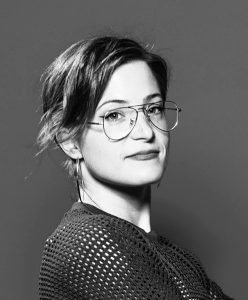
Jenna Carlie, California Institute of the Arts
Jenna studied photography at Speos Institute of Photography in Paris, France and went on to study at Rhode Island School of Design. During the time at RISD, Jenna worked under Annie Leibovitz, Mark Katzman, and Dusty Kessler. In 2016, Jenna graduated with a BFA in photography from Rhode Island School of Design. Jenna moved to Los Angeles and in 2017 worked for Lauren Greenfield, in 2018 worked for Alexa Meade, and by the end of 2018 Jenna Carlie Photography and Design was opened for business. Between 2018 and 2020 Jenna worked on various photographic series for different private collections in the Midwest. In 2020, the Saint Louis Art Museum hired Jenna as their travel contract photographer and later as their in-house photographer, where Jenna is still employed. Jenna is currently getting an MFA from California Institute of the Arts and is expected to graduate in 2024.
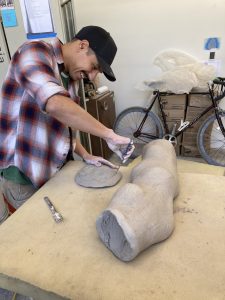
Alberto Lozano Ruvalcaba, Mendocino College
I was born in Tijuana, Baja California in 1993. My family lived in Rosarito next to the beach on a street called Niño Artillero (artillery child). My school was named after Emiliano Zapata, a leader of the Mexican revolution. My parents moved us to the USA when I was eight years old. We left everything behind except for each other and the memories that persist of our home and of the natural landscape around it. They brought us to this country for my siblings and I to have a better future than what was available back home. Thanks to my parents and siblings and my own perseverance, I am now the first person in my family to pursue a master’s degree from a university. I am now a permanent resident of the USA and a candidate for an MFA degree.
ABOUT THE PROFESSIONAL DEVELOPMENT FELLOWSHIP
CAA’s Professional Development Fellowship program supports promising artists and art historians who are enrolled in MFA and PhD programs nationwide. Awards are intended to help them with various aspects of their work, whether for job-search expenses or purchasing materials for the studio. CAA believes a grant of this kind, without contingencies, can best facilitate the transition between graduate studies and professional careers. The program is open to all eligible graduate students in the visual arts and art history. Learn more.
CAA 2023 Awards for Distinction
posted by CAA — February 06, 2023
CAA announces the 2023 recipients of Awards for Distinction. By honoring outstanding member achievements, CAA reaffirms its mission to encourage the highest standards of scholarship, practice, connoisseurship, and teaching in the arts. With these annual awards, CAA seeks to honor individual artists, art historians, authors, museum professionals, and critics whose accomplishments transcend their individual disciplines and contribute to the profession as a whole and to the world at large.
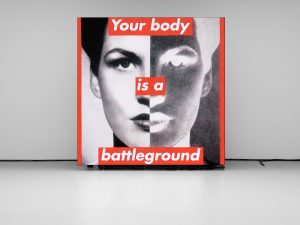
Installation view, Barbara Kruger, David Zwirner, New York, June 30–August 12, 2022. Courtesy David Zwirner.
Among the awards, the Distinguished Artist Award for Lifetime Achievement is presented to Barbara Kruger whose influential works have consistently had viewers question the larger society around them for over four decades.
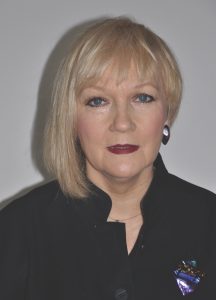
Griselda Pollock
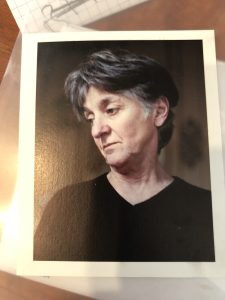
Svetlana Alpers
The Distinguished Lifetime Achievement Awards for Writing on Art are being presented to feminist art historian Griselda Pollock and art historian of northern Renaissance and Dutch Golden Age art Svetlana Alpers.
Art Journal Award
Alfred H. Barr Jr. Award
Julia Burtenshaw, Héctor García Botero, Diana Magaloni, and María Alicia Uribe Villegas, The Portable Universe / El universo en tus manos: Thought and Splendor of Indigenous Colombia (DelMonico Books/Los Angeles County Museum of Art, 2022)
Alfred H. Barr Jr. Award for Smaller Museums, Libraries, Collections, and Exhibitions
No recipient this year
Frank Jewett Mather Award
Eduardo Cadava
Charles Rufus Morey Book Award
Sylvia Houghteling, The Art of Cloth in Mughal India (Princeton University Press, 2022)
Arthur Kingsley Porter Prize
Tomasz Grusiecki, “Doublethink: Polish Carpets in Transcultural Contexts” and Hugo Shakeshaft, “Beauty, Gods, and Early Greek Art: The Dedications of Mantiklos and Nikandre Revisited”
Artist Award for a Distinguished Body of Work
Dawoud Bey
CAA/AIC Award for Distinction in Scholarship and Conservation
Michele Marincola and Lucretia Kargère
Distinguished Artist Award for Lifetime Achievement
Barbara Kruger
Distinguished Lifetime Achievement Award for Writing on Art
Svetlana Alpers and Griselda Pollock
Distinguished Teaching of Art Award
Mary Lum
Distinguished Teaching of Art History Award
No recipient this year
Excellence in Diversity Award
Arlene M. Dávila
Citations:
Art Journal Award
Emilie Boone, “When Images in Haiti Fail: The Photograph of Charlemagne Péralte,” Art Journal, Winter 2022
The 2022 jury has chosen Emilie Boone as the recipient of the 2022 Art Journal Award for the essay, “When Images in Haiti Fail: The Photograph of Charlemagne Péralte.” Boone’s deconstruction of a single photo offers readers an entry into the contested history surrounding the US occupation of Haiti, as well as the attendant visual politics of this period (1915–34). Through close textual analysis of Péralte’s historically significant image, the author weaves together a situated narrative of Haitian visual culture under occupation, interrogating crucial notions of ontology through examination of photographic composition. Boone frames the racialized body as a contested and imagined site rife for adaptation and tampering, first through vernacular photographic techniques, as well as other forms of pictorial representation. In the end, Boone’s text summons an interrogation of tradition, and indeed, of the implicit politics of the medium of photography itself.
Jury members:
Omar Kholeif, Sharjah Art Foundation, Chair
Phil Taylor, George Eastman Museum
Tilo Reifenstein, York St John University
Alfred H. Barr Jr. Award
Julia Burtenshaw, Héctor García Botero, Diana Magaloni, and María Alicia Uribe Villegas, The Portable Universe/El universo en tus manos: Thought and Splendor of Indigenous Colombia (DelMonico Books / Los Angeles County Museum of Art, 2022)
The Western concept of El Dorado has long impacted the study of the ancient cultures of Colombia, overshadowing the manifold stories that pre-Columbian art weaves across time and space. How can museum curators uncover those stories, illuminate their nuanced complexities, and present them to the public in engaging and innovative ways? The Portable Universe/El universo en tus manos is the remarkable outcome of just such an undertaking. Both the catalog and related exhibition are the result of a six-year collaboration between the Los Angeles County Museum of Art and Museo del Oro, Bogotá. Most importantly, the curators collaborated with a contemporary Indigenous community in Colombia, the Arhuaco of the Sierra Nevada de Santa Marta. The Portable Universe reveals that pre-Columbian artifacts—including goldworks, ceramics, and textiles—are not mere objects, but rather messengers that link living beings (people, animals, plants) and places across space and time. Each is, in brief, a portable universe. The Arhuaco explain that these messengers need to be “nourished,” or brought back to life. Thus, the concept of nourishment enters curatorial practice: a form of sustained, reciprocal attention that goes well beyond customary models of stewardship. Incisively written, gorgeously illustrated, and ingeniously designed, this groundbreaking book brings together interdisciplinary research (in history, archaeology, anthropology, environmental studies, and ornithology) and Indigenous knowledge to propose a new approach to the material and spiritual culture of ancient Colombia, one which underscores the transformative powers of cross-cultural dialogue. A major advance in the study of Indigenous art, the book spurs us to creatively rethink our notions of both the museum and scholarship.
Jury Members:
Benjamin Anderson, Cornell University, Co-chair
Karen Lang, Independent Scholar, Co-chair
Francesca Pietropaolo, Independent Scholar
Jochen Wierich, Aquinas College
Frank Jewett Mather Award
Eduardo Cadava
The jury has awarded this year’s prize to Eduardo Cadava, based on his elegant book Paper Graveyards (MIT Press, 2021) and in recognition of his long career within the field of art criticism, especially his influential theories of photography. Paper Graveyards is the culmination of decades of Cadava’s thinking about how images and technical media actively transform social and political life, and his far-ranging case studies (including examinations of artists Leon Golub, Nancy Spero, Fazal Sheikh, and Susan Meiselas) orient themselves towards activist practices that speak to and from the margins. Wending through ruminations on materiality, forms of documentary, and modes of circulation, Cadava writes a new account of what it means to pay visual witness in the face of constant emergency.
Jury members:
Julia Bryan-Wilson, Columbia University, Chair
Nicole Fleetwood, New York University
Kim Theriault, Dominion University
Charles Rufus Morey Book Award
Sylvia Houghteling, The Art of Cloth in Mughal India (Princeton University Press, 2022)
The Art of Cloth in Mughal India by Sylvia Houghteling focuses on the production, circulation, and consumption of South Asian textiles in the sixteenth and seventeenth centuries, a period of both global manufacturing dominance and intense artistic creativity for Indian cloth-makers. The book offers a uniquely comprehensive account of the complex meanings of cloth as it moved across the Mughal imperial courts, the kingdoms of Rajasthan, the Deccan sultanates, and the British Isles, all the while remaining attentive to the richness of regional specialties. Houghteling brilliantly weaves together a capacious range of topics including issues of patronage and labor, iconography and symbolism, technical and ecological considerations, connections with poetry and other fine as well as decorative arts, and the sensory experience of the various textiles, from gauzy muslins to tent panels. Starting with an account of the Emperor Akbar’s patronage of dyers and weavers, Houghteling analyzes the elaborate Bikaner Robe, which Akbar’s successor Jahangir presented to a provincial raja. She moves on to the elegant textile culture of the Rajput Court of Amber and the kalamkari cloth of Machilipatnam, ending with a survey of the flourishing market for Hindustani cloth in early modern Britain, evidence of a new global cosmopolitanism that linked the Mughal court with the Stuarts. The book’s handsome design, color illustrations, and vivid writing make Art of Cloth an engaging read for scholars and general readers alike.
Jury members:
Lisa Schrenk, University of Arizona, Chair
John Cunnally, Iowa State University
Laura Anne Kalba, University of Minnesota, Minneapolis
J. P. Park, University of Oxford
Andrew Wasserman, American University
Arthur Kingsley Porter Prize
Tomasz Grusiecki and Hugo Shakeshaft
Tomasz Grusiecki, “Doublethink: Polish Carpets in Transcultural Contexts,” The Art Bulletin, September 2022
That art objects move, and that in doing so their meaning changes, is now widely accepted, but conceptualizing and describing the ways in which such changes occur still often eludes us. Tomasz Grusiecki’s winning essay provides a framework for doing just that, in its elegant examination of the lives and plural significances of carpets in early modern Eastern and Central Europe. Borrowing George Orwell’s notion of “doublethink,” Grusiecki shows, with a keenly historical eye, that there was little tension for early modern patrons between the provenience of carpets in Safavid Persia or Ottoman Turkey and their adaptation into local European contexts, where they became fundamental to the construction of individual and burgeoning national identities. Grusiecki moves past the simple charting of the “surprising” provenances of individual objects to weave a complex web in which he embraces the inevitable messiness of movement—and of meaning—in early modernity. Grusiecki’s transcultural doublethink promises to be a concept of great utility for our discipline as it continues to grapple with these issues.
Hugo Shakeshaft, “Beauty, Gods, and Early Greek Art: The Dedications of Mantiklos and Nikandre Revisited,” The Art Bulletin, May 2022
In his groundbreaking article “Beauty, Gods, and Early Greek Art: The Dedications of Mantiklos and Nikandre Revisited,” Hugo Shakeshaft transforms narratives around the topic of beauty in the religious art of archaic Greece. He moves away from such still-influential Enlightenment frameworks as Kant’s account of aesthetic autonomy and Winckelmann’s concern with timeless aesthetic values to examine the question of beauty from a historicizing vantage point. In order to assess how beauty mattered for those who patronized, created, employed, and observed artworks in ancient Greece, Shakeshaft focuses on two anthropomorphic votive figurines—a bronze statuette dedicated by Mantiklos (ca. 700–675 BCE) and a marble life-size statue dedicated by Nikandre (ca. 660–630 BCE). In his deeply researched discussion, he reconsiders these celebrated objects through a layered analysis of their forms, inscriptions, and materials as well as by reading them alongside aesthetic values expressed in the writings of Homer and Hesiod. In particular, he calls attention to the ideal of charis, a rich concept that can be translated as “beauty,” “favor,” “gratitude,” and “grace,” to show how beauty was inextricably tied to ideas of reciprocity. Ultimately, Shakeshaft posits that beauty needs to be treated as rigorously as any other interpretive category, and—far from being a universal—demands contextualized cultural awareness.
Jury members:
Adam Jasienski, Southern Methodist University, Chair
Susanna Berger, University of Southern California
Christine I. Ho, University of Massachusetts Amherst
Artist Award for a Distinguished Body of Work
Dawoud Bey
Dawoud Bey has a photographic career spanning four decades, beginning in 1975 with the seminal five-year portrait project of everyday life in Harlem. His work has recently traveled in a retrospective titled An American Project” at the San Francisco Museum of Modern Art and co-organized by the Whitney Museum of American Art. In his recent publication, Dawoud Bey: Two American Projects, his work explores race, African American history and underrepresented communities; featuring portraits memorializing the six children who were victims of the Ku Klux Klan’s bombing at 16th Street Baptist Church in Birmingham, and a group of black-and-white landscapes made in Ohio where the Underground Railroad once operated. In the 1980s Bey collaborated with artist David Hammons by documenting the performances Bliz-aard Ball Sale and Pissed Off. In 2017 he received the MacArthur Fellowship and is Professor of Photography at Columbia College Chicago where he has taught for over twenty years. Bey’s work is in permanent collections of leading museums, including the Art Institute of Chicago, the Museum of Modern Art in New York, and the Whitney Museum of American Art.
Jury members:
Derek G. Larson, Purdue University, Chair
Stephen Fakiyesi, Independent Artist
Jessica Hong, Art Museum
CAA/AIC Award for Distinction in Scholarship and Conservation
Michele Marincola and Lucretia Kargère
Michele Marincola and Lucretia Kargère are recognized by conservators, curators, and art historians, for their contributions to the study of European sculpture. Their recent, joint publication titled The Conservation of Medieval Polychrome Wood Sculpture: History, Theory, Practice (Los Angeles: Getty Conservation Institute, 2020) is a major contribution to the fields and represents two-decades of collaborative work.
Marincola is the Sherman Fairchild Chair, and Sherman Fairchild Distinguished Professor of Conservation, at the Conservation Center, Institute of Fine Arts, New York University, a position she has held since 2014. Kargère is a Conservator of Medieval Sculptures at the Metropolitan Museum of Art and the Cloisters. Marincola previously worked with Kargère at the Cloisters where they collaborated on conservation and research. Marincola’s contributions to scholarship include research on the sculptor Tilman Riemenschneider and the translation and commentary of Johannes Taubert’s Farbige Skulpturen into English. Kargère, who is known for her work on French sculpture, has collaborated with Maricola and conservation scientists at the Metropolitan Museum of Art on the publications about the materials and techniques used in Medieval polychrome sculpture.
Both Marincola and Kargère are recognized for having educated students and colleagues about the history and conservation of European Medieval polychrome sculpture. Numerous students, interns, and Fellows have benefitted from their expertise both at the Metropolitan Museum of Art and at New York University. Moreover, Marincola and Kargère are known for producing publications and presentations that touch upon important issues in art conservation, art making, art history, and ethics.
Jury members:
Tiarna Doherty, University of Delaware and Smithsonian, Chair
Fernanda Valverde, Amon Carter Museum
Rebecca Rushfield, Rebeccah Rushfield Arts Consultants
Distinguished Artist Award for Lifetime Achievement
Barbara Kruger
Barbara Kruger’s distinct artistic practice has palpably shaped the broader social, cultural, and visual fields for decades. For over four decades, the artist has persistently expanded her practice, exploring new media, from video to large-scale installations, collaborating with popular brands (with some even co-opting her iconic visual language) extending her influence beyond the art world, to pursuing intrepid interventions in the public sphere. Best known for her works with bold, declarative, often imposing and seemingly authorless text in which she overlays appropriated black-and-white imagery, Kruger interrogates mass media and consumer culture’s effects on how we see and understand ourselves. As the artist expressed, “I work with pictures and words because they have the ability to determine who we are, what we want to be and what we become,” and she sees her works as prompts “to question and change the systems that contain us.” With the internet boom, explosion of social media, advertising’s increasingly sophisticated, if not untruthful, tactics, and advertising’s constant presence now from an infinite number of sources, Kruger’s work, past and present, feels more relevant than ever (as seen with numerous and recent solo presentations around the globe). Throughout her dedicated practice, Kruger has reminded us that these issues will continue to raise existential concerns and impact society writ-large until actively contended with.
Jury members:
Derek G. Larson, Purdue University, Chair
Stephen Fakiyesi, Independent Artist
Jessica Hong, Art Museum
Distinguished Lifetime Achievement Award for Writing on Art
Svetlana Alpers and Griselda Pollock
Renowned for her groundbreaking work on Dutch Golden Age painting, Svetlana Alpers’ writings have had a profound impact on the field of art history. A founder of the journal Representations and one of the central figures in the revisionist turn of the new art history, Alpers broke with long-standing approaches to northern European art by asking new questions about visual culture and ways of seeing. In The Art of Describing (1983), her questions about optics and image-making devices ignited scholarship in premodern and modern fields alike. In subsequent publications, Alpers’ notions about the monetary value of art materials and the marketing strategies of artists also proved fertile ground for later scholars. However, the Art of Describing did not only reinvent methodologies for understanding Dutch art, pushing against the field’s reliance on ideas forged in the study of Italian artistic practices; it recast what it means to “describe” art, the ekphrastic basis of our field, effecting the writing of art history ever since.
Professor Emerita from the University of California at Berkeley, where she taught from 1962–98, Alpers continues to publish across and redefine fields ranging from the Baroque to contemporary art and photography history. Widely known for Rembrandt’s Enterprise: The Studio and the Market (1988), which won CAA’s Charles Rufus Morey Book Award in 1990, Alpers has also penned field-changing monographs on Tiepolo, Rubens, and Velázquez. To this list, Alpers has added her latest book, Walker Evans: Starting from Scratch (2020), a monograph on one of the most important photographers of the twentieth century, and part of a subset of her writings that have confronted directly the challenges of photography, as The Art of Describing long ago became required reading in this field. Her recent publications such as Roof Life (2013) make concrete the writerly challenge that her work has always issued to art history, the need to reinvent “how” as well as “what” we say and write about art.
Arguably the leading feminist art historian of the generation after Linda Nochlin, Griselda Pollock first made an impact with a vigorous dissembling of the “artists mythologies and media genius” that attended the canonization of artists such as Vincent van Gogh. She went on to devote close attention to previously devalued women artists such as Mary Cassatt, Eva Hesse, and, more recently, in her innovative Virtual Feminist Museum, Charlotte Salomon. Essays such as “Modernity and the Spaces of Femininity” in her 1987 book Vision and Difference were powerful examples of her strategy of “feminist interventions” into the history of art, rather than falling for the trap of settling for the inclusion of women artists within the prevailing patriarchal structures.
The Award acknowledges this groundbreaking work as well as a wider, far-reaching achievement, ranging across several decades. Pollock’s writing has long refused to stay in its art historical place, to belong to a single position or way of working. Her brand of feminist revisionism constantly engages the social history of art, bridges art history with cinema studies, opens onto the fields of psychoanalysis and cultural geography, while also participating in the debates of postcolonial theory and responding to the imperatives of decolonization. While remaining attentive to the demands of each of these critical disciplines, her writing about art remains passionate, profound, open-hearted, and, always, political.
Jury Members:
Terry Smith, University of Pittsburgh, Chair
George Baker, University of California Los Angeles
Gillian Elliott, George Washington University
Distinguished Teaching of Art Award
Mary Lum
Mary Lum is CAA’s 2023 Distinguished Teaching of Art Award recipient. Lum, an accomplished visual artist in her own right, has been a professor of painting and drawing at Bennington College in Vermont since 2005, and prior to that taught at the New York State College of Ceramics at Alfred University. Among her many notable contributions as an educator is her ability to nurture a passion for art making in her students that has taken many of them from foundational studies, to graduate school, and to successful professional practices as artists, art directors, curators, and academic professors.
Steven Frost, Assistant Professor and Faculty Director, University of Colorado Boulder says of his time as a foundation student under Lum; “With her help I began to understand a creative practice needed to be fed by more than time in the studio . . . She took the time to bring me up to speed and prepare me for the professional world.”
Rebekah Modrak, foundation student, current professor University of Michigan, STAMPS School of Art and Design says of Lum “Thank goodness her main concern was the possibility that there might be compelling artists lurking below our early and often tenuous attempt at artmaking.” “When I think of moments in my life that changed my trajectory,” says former student and UK-based art director and curator Christine Serchia, “Mary Lum is responsible for multiple moments.”
CAA is excited to recognize Mary Lum’s more than two decades of teaching with this award.
Jury members:
Derek G. Larson, Purdue University, Chair
Stephen Fakiyesi, Independent Artist
Jessica Hong, Art Museum
Distinguished Feminist Awards
Nalini Malani and Marsha Meskimmon
Nalini Malani’s work has been recognized in solo exhibitions at over thirty international institutions. Her work has embraced painting, video, stop-motion, and other time-based media, while engaging issues of women’s equality in India, where her family took refuge in 1946 after the partition. Malani’s early career in painting gave way to a more focused approach to time-based media in the 1990s, making works such as the 1998 Remembering Toba Tek Singh, a meditation on nuclear testing in India and Pakistan. Focusing on the aftereffects of the devastating partition of India and Pakistan, Malani’s work has been liberal in its use of media types and productions, including the emotive devices of theater.
Malani has turned this unflinching attention to the ways in which the woman’s body has been used as a pawn in games of nationalism and internationalism. Her Mother India: Transitions in the Construction of Pain (2005) combined archival footage and other imagery, a series of juxtapositions that shed new light on the depicted contorted bodies of women. She continues this thread in a 2020 multimedia performance of images projected onto the Taj Mahal Hotel, inspired by the week-long gang rape and murder of an eight-year-old girl. Malani’s work is a beacon; her work is eminently important now as the world bears witness to an increase in femicide and gender-based violence.
Marsha Meskimmon, PhD is a professor of art history who studies, teaches, and writes on global feminisms. Her groundbreaking scholarly work has been matched by a commitment to promoting and mentoring women in the field. Meskimmon is editor for Drawing In, and she is also a consultant editor for Open Arts Journal. She has authored or co-authored twelve books over her career, with a sustained focus on the political stakes of feminism and its ability to shed light on the circulation of art and the discourse of aesthetics. With Amelia Jones, she edits the book series Rethinking Art’s Histories for Manchester University Press, a series that has promoted books that rethink art and its histories, and has used feminist thought in relation to “global” and non-Western approaches to art history. Her work on the exhibition WACK! Art and the Feminist Revolution marked an important return to feminism in the art world, a redefinition of the stakes and of the purview of its ideas. Her essay for the exhibition succeeded in arguing why feminism is global—describing it as a constellation of approaches, places, and times. It models an interdisciplinary and collaborative idea of feminism, not a static theory that spreads from the North Atlantic out to world. Her tireless work on behalf of women in the arts is a model for scholars who do their work out of a stated commitment.
Jury Members:
Delinda Collier, School of the Art Institute of Chicago, Chair
Yvonne Love, Penn State University
Midori Yoshimoto, New Jersey City University
Excellence in Diversity Award
Arlene M. Dávila
Arlene M. Dávila is Professor of Anthropology and American Studies at New York University and founding director of The Latinx Project. Established in 2018, The Latinx Project is an interdisciplinary space focusing on US Latinx Art, Culture and Scholarship. In addition to hosting artists and programs, it functions as a platform fostering critical public programming.
Professor Dávila’s has published extensively on Latinx cultural politics in museums and contemporary art, media, and urban environments to explore the intricacies and ultimate challenges of visualizing Latinx art and culture. Her research spans urban ethnography, the political economy of culture and media, consumption, immigration and geographies of inequality and race.
Professor Dávila’s publications, with a focus on public imagery and cultural politics, include Latinx art: Artists, Markets and Politics (Duke University Press, 2020), El Mall: The Spatial and Class Politics of Shopping Malls in Latin America (University of California Press, 2016), the revised edition of Latinos Inc: Marketing and the Making of a People (University of California Press, 2012), Culture Works: Space, Value, and Mobility Across the Neoliberal Americas (NYU Press, 2012), and Latino Spin: Public Image and the Whitewashing of Race (NYU Press, 2008). Dávila also co-edited the collection Contemporary Latina/o Media: Production, Circulation, Politics (NYU Press, 2014). Her articles have appeared in AZTLAN: A Journal of Chicano Studies and Centro: Journal of the Center for Puerto Rican Studies.
Carmenita Higginbotham, Virginia Commonwealth University, Chair
Anne H. Berry, Cleveland State University
Kelly Walters, Parsons School of Design
Meet the 2023 CAA Annual Conference Kress Travel Grant Recipients
posted by CAA — January 30, 2023
Recognizing the value of the exchange of ideas and experience among art historians, the Kress Foundation is offering support for scholars participating as speakers at the 2023 CAA Annual Conference. The scholarly focus of the papers must be European art before 1830.
Samuel H. Kress Foundation CAA Annual Conference Travel Fellows 2023
Presentation: “Ordering the Ground: Ornamental Parterres and the Emergence of Academic Botany”
Session: Making Green Worlds (ca. 1450–1700)
Lauren Cannady, University of Maryland, College Park
Rather than the depiction of scholarly work taking place in Sébastien Leclerc’s engraved headpiece for Denis Dodart’s Mémoires pour servir à l’histoire naturelle des plantes (1676), it is a scene of the direct observation of nature glimpsed through a window that is most striking. Three men stand in an arabesque-patterned parterre to more closely examine the individual plants that compose the garden. One uses his walking cane to point out a specimen—literally embedded in the undulating scrollwork of the parterre—to his companions. This ornamental plantation—or manner of “ordering of the ground” as Francis Bacon lamented in his essay “Of Gardens” (1625)—reflects the dominant style of contemporary aristocratic pleasure and academic botanic gardens across northern Europe. Such impositions of formal, physical order on the natural world, however, belie the acknowledged chaos of seventeenth-century natural history. Bacon, among others, contended that empirical observation could best be used to make sense of the “many things in nature [that] have been laid open and discovered,” including organic material from around the world collected by Europeans in the name of colonialism. The renewed emphasis on empiricism did little, however, to rectify linguistic confusion and imprecise nomenclature, particularly pressing issues for the emerging field of botany. As a repository for nonnative flora and living laboratory for the production of naturalist knowledge, the patterned garden proved a visibly reliable way to order the natural world in early modern Europe.
Presentation: “’ A “New World” for Profit: Christopher Columbus’s Search for Gold on Genoese Silver”
Session: Making Green Worlds (ca. 1450–1700)
Jillian Laceste, Boston University
A seventeenth-century silver vase made by the Flemish silversmith Gio Aelbosca Belga for Agostino Pallavicino, the future doge of Genoa, depicts a moment of encounter between Christopher Columbus and Indigenous Americans. The vessel emphasizes a one-sided transaction by showing Indigenous figures greeting the explorer with gifts at the shore of the Atlantic. While painted Columbian artworks created in early modern Genoa treat the explorer’s arrival as a heroic maritime feat or moment of introduction of Christianity into the Americas, silver vessels such as Aelbosca’s differ because they depict Columbus’s journey for Cipangu—a land rich with gold—on the surface of silver, a precious metal crucial to Spanish colonization of the Americas. This paper will analyze the subject matter and material to address the presentation of Europe’s fertile “New World” contained within Aelbosca’s vessel. By connecting it to the history of the Americas—in particular Columbus’s failed search for gold but eventual outpouring of silver—I argue that this vase offers a view of the Americas that emphasizes not only its novelty and foreignness but also its utility for mining and profit.
Presentation: “Architectural Drawing, Information Management, and Early Modern Science: Wendel Dietterlin Drafts the Architectura (1593–98)”
Session: Drawing (New) Stories
Elizabeth Petcu, University of Edinburgh
This paper surveys the massive corpus of drawings associated with Wendel Dietterlin’s 1593–98 Architectura treatise to establish how architectural drawing in sixteenth-century Europe came to model practices for managing visual information in scientific research. To craft the Architectura drawings, Dietterlin and his assistants wielded tactics of annotation, bricolage, folding, and copying that had long aided architects in stimulating creativity, exposing problems, saving materials, enhancing productivity, facilitating communication, and documenting progress. I compare the 164 known Architectura drawings—among the largest surviving bodies of Renaissance architectural treatise drawings—to botanical and geological drawings in the collections of physician Felix Platter and natural historians Conrad Gessner and Ulisse Aldrovandi to show that natural philosophers (i.e. early modern scientists) came to derive similar benefits from such drawing techniques. I argue that Dietterlin’s tactics for orchestrating his Architectura’s wealth of visual information attests that, by 1600, techniques of visual research originating in architectural drawing circulated freely between makers of architectural drawings and natural philosophers. I thereby expose how makers of architectural drawings and natural philosophers in Europe began to exchange and codevelop parallel, empirical methods for forming knowledge.
Presentation: “Problematising the Notion of ‘Eastern European Art’: Two Case Studies of a Multiplicity”
Session: What is Eastern European Art?
Marta Zboralska, University of Oxford
Radek Przedpełski, Trinity College Dublin
This presentation aims to challenge the ontological assumption of there being a monolithic ontological entity such as “Eastern European art,” dialectically elaborated in its opposition to “Western art,” which then needs to be put on the map in an IRWIN-like gesture. We propose two case studies that problematize such an assumption, arguing instead that starting on the ground and unfolding an analysis from there might offer a more fruitful art-historical path of inquiry. We shall demonstrate that the model of a case study enfolds multiple frameworks of reference cutting across the East/West dichotomy, such as the immediately local or the regional on the one hand, or the long durée of the Anthropocene on the other.
The first case study will outline a media archaeology of Tatar timber mosques/minarets on the territories of the former Grand Duchy of Lithuania, showing how these under-researched media blend aniconism with local contexts and engage a continuum of artefacts and practices including muhir tableaux, hramotka (talismans), siufkanie (sorcery), and fał (divination). This case study argues that these architectural artworks explode the concept of “Eastern Europe(an art).” Instead, they open up a liminal space conjoining Islamicate architecture, Turkic animism, the “Long Baroque” of the Polish-Lithuanian Commonwealth as well as the vernacular regional traditions of timber building construction and ornamentation.
The second case study will zoom in on the ideas of Polish writer Witold Gombrowicz to consider the issue of regional artistic identity. As noted by literary scholar Anita Starosta, Gombrowicz refused the binary choice of either affirming Polishness or aspiring to Europeanness. Instead, it was within the periphery’s “not quite-ness” that the writer located the potential to “reveal Europe’s immaturity.” Looking at Diary by the American appropriation artist Sherrie Levine, a 2019 work inspired by Gombrowicz, this case study will argue for embracing the incompleteness of “Eastern Europe” as an area of art-historical enquiry.
Presentation: “‘Narrating’ the Landscape: Pictorial and Aesthetical Inventiveness to Portray the Essence of Nature”
Session: Eighteenth-Century Atmospheres: Science, Politics, Aesthetics
Marie Beaulieu Orna, France
Leaving the port of Naples for Sicily in 1777, the connoisseur Richard Payne Knight (1750–1824) wrote in his travel diary: “The infinite variety of tints were all harmonized together by that pearly hue, which is particular to that climate. (This tint very particularly marks Claude Lorraine’s Coloring). As we advanced into the open sea, the colours and forms seemed to sink into the Atmosphere and grow gradually indistinct, till at last the Sun withdrew its rays and left all in darkness.” Disclosing the term “atmosphere” in its literal meaning, Knight’s remark paradoxically reveals the fundamental role of optical theories and their interpretation in artistic practice in giving rise to the figurative essence of this same word, or to “spreading the tone” as Coleridge expressed it in Biographica Literaria (1817). Following Knight’s example, certain late eighteenth-century British landscapists aimed at conveying their personal impression felt upon observing the natural scenery, especially by handling color in travel sketches. Their Grand Tour became an artistic and aesthetical laboratory, into which they experimented with materials and processes in order to depict exotic landscapes with sensibility, intended for “polite” amateurs. The specific training these artists as well as these amateurs shared contributed to relate their mutual perception of nature and to develop this specific sense of “atmosphere.” This paper intends to demonstrate this artistic and aesthetical pivotal turn, embedded in the British contemporary scientific and philosophical context.
Presentation: “Imperial Materials: Extracting White Marble during the 18th and 19th Centuries”
Session: The Extractive Nineteenth Century
Amalie Skovmøller, University of Copenhagen
Since antiquity, white marble has been extracted from quarries centered in the Mediterranean, and transported to workshops to be crafted into sculpture and architectural decoration. While marble extracting activities declined following the collapse of the Roman Empire, they resumed with new intensity during the eighteenth century, peaking in nineteenth as quarries were sought out throughout Europe, Scandinavia, and in the US. Intertwined with Imperial policies, ideas about aesthetics and nation building, white marble assumed the role as prime material for high art and monumental embellishment. Traditionally studied as an omnipresent, abstract material with little regard to the complex infrastructures framing its extraction, the role of white marble consumption in relation to histories of colonialism remains peripherally explored. This paper centers on the intense marble extraction initiated by the Danish king Frederik V (1723–1766), when the Danish Empire included all of Norway. The king initiated expeditions into Norwegian territories to locate new sources of white marble, and the quarries established at Fauske, near Oslo, and in Hordaland secured the desired stones, which were extracted in thousands of blocks and shipped to Copenhagen. This paper explores the sculptures and architectural decoration in Copenhagen, deriving from the intense exploitation of Norwegian resources, as representing the Imperial ideologies, extractive capitalism, and colonial expansion politics of the Danish Empire during the latter eighteenth century. In doing so, the paper also touches upon the global economics and ideologies of marble extraction and circulation taking place throughout Europe and the US during the eighteenth and nineteenth centuries.
Presentation: “Byzantine Embroideries and the Entangled Visual Traditions of Eastern Europe”
Session: What is Eastern European Art?
Catherine Volmensky, The University of British Columbia
A late-Byzantine liturgical veil shows the recumbent figure of the dead Christ. Referred to as the aër-epitaphios of John of Skopje, this red silk textile is lavishly embroidered with gold, metallic, and silk threads. Similar types of embroidered veils were found in monasteries and churches throughout the Byzantine empire and its religious sphere. Drawing on a theory of line, this paper discusses the entangled artistic, religious, and economic networks of workshops and patrons shared between Thessaloniki, Mount Athos, and the regions of the Balkan Peninsula. Through this methodology, this paper traces the movement of images across spaces and media and provides a new approach to late and post-Byzantine textiles to demonstrate the vibrant and multifaceted connectivity between the regions of Eastern and Southern Europe. The role of the patron is also questioned in the context of the economic value of silk and gold-figure embroidery during the fourteenth through sixteenth centuries, emphasizing the position of elite women patrons in the Balkans, and how they have been examined or overlooked in previous scholarship. Since the intersection of lines create networks, this methodology also emphasizes a nonhierarchical approach to works created within Byzantium’s religious sphere. The emphasis on communication and interconnected structures offers a grounded methodology with which to examine gold-figure embroidery created and used in religious spaces of the Balkan Peninsula, Thessaloniki, and Mount Athos.
Presentation: “Begarelli, Model for Algardi? Renaissance Clay Modelling as a Precedent of Baroque Marble Sculpting”
Session: The Essence of Things? Limits and Limitlessness in Early Modern Sculpture
Lucia Simonato, Scuola Normale Superiore, Italy
In her monograph on Alessandro Algardi, Jennifer Montagu intuited the influence of Antonio Begarelli’s model on the works of art by the Bolognese Baroque sculptor. Yet, a systematic study of this possible relationship has not followed this intelligent opening. Begarelli was a sculptor who until his death in 1565 made monumental statues in Emilia and in Lombardy, using almost exclusively white-painted terracotta—a choice, according to Vasari, criticized by Michelangelo, who would have said in front of his works: “If this clay were to become marble, woe to the ancient statues!” Reassessing Begarelli as a model for Algardi poses not only an issue of intermediality in the transmission of formal solutions, but also a question on matter’s expressive possibilities. To what extent did the Renaissance terracotta, with its easier naturalistic adhesion and its dynamic spatial conception, offer a model to Baroque marble figuration? How did the dialogue with Begarelli shape Algardi’s use of terracotta modelling within his artistic process as compared, for example, to Bernini’s? This paper will focus on these issues.
In addition, the Samuel H. Kress Foundation has provided funds for alumni of the program to return and take part in our vast network of both international and North American scholars:
- Iro Katsaridou, Greece, 2022
- Tomasz Grusiecki, Canada, 2015
- Halyna Kohut, Ukraine, 2020
- Angeliki Pollali, Greece, 2014




